Content
Stinging nettle belongs to the Urticaceae family. Latin name Urtica urens. A unique plant that has a lot of useful characteristics. It is used in various fields - from cooking to the treatment of complex diseases. You can easily grow nettles in your area. However, you should first familiarize yourself with the beneficial and harmful qualities of this plant.
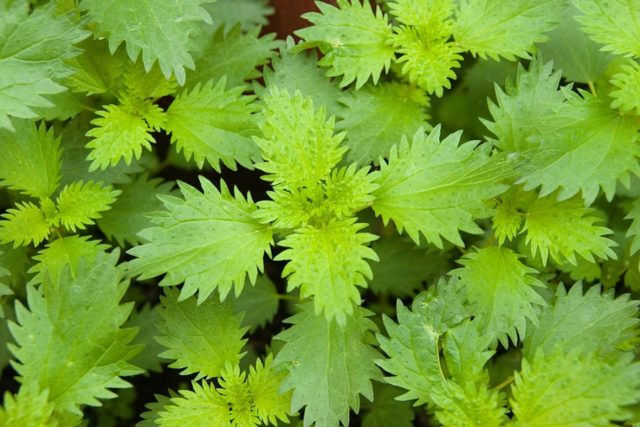
The culture multiplies rapidly and forms a continuous carpet
Botanical description of stinging nettles
The appearance and characteristics of the nettle depend on the belonging of the plant to a particular species. Stinging nettle has distinctive features:
- Stalkb. Erect, furrowed, tetrahedral. The surface is covered with vertical shallow grooves. Hard stinging hairs are located along the entire length of the stem. Shoot height from 15 cm to 55 cm.
- Root... Stinging nettle has a pivotal root system. The main root is vertical, powerful, but rather short.
- Leaves... Small, opposite, colored green. They are ovoid or oval in shape, pointed at the end, with deep, straight teeth. Leaf length 2-6 cm, width 1-4 cm. Also covered with stinging hairs.
- Flowers... Axillary, small, green. They can be single or collected in inflorescences. Blooms from early May to mid-October.
- Spike inflorescence... The length is equal to the leaf stalks or slightly shorter. The usual length of the petiole is 1-4 cm.
- Fetus... The box is polyspermous, rarely - a nut. The box can be juicy or dry. Nettle capsule width 1.1-1.3 mm, length 1.5-2.0 mm. Fruiting in June.
In addition to the description of the plant, other important characteristics of stinging nettle should be noted. The maximum fruiting rate is 22,000 boxes per plant. The depth of germination of nettle seeds is 1.5-2.0 cm. The period lasts from spring to mid-year at a temperature of + 20-22 ° C. It is considered a weed that thickens the planting of vegetable, horticultural and industrial crops. May reduce yields. The appearance of stinging nettle in the photo below:
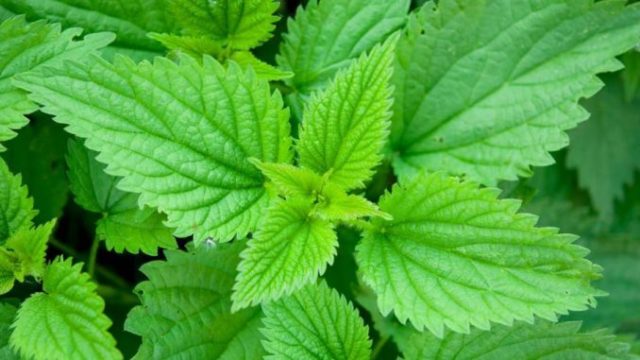
By the shape and color of the leaves, it is easy to distinguish stinging nettles from dioecious
Where stinging nettles grow
The culture is widespread in European countries, North America and Russia. The habitat of stinging nettle is very extensive. The plant can be found in any latitude, except for the Far North.
It grows near dwellings, on vacant lots, along fences. Stinging nettle forms small clumps, but does not form large thickets. Loves well-cultivated soil rich in humus and nitrogen.
What is poisonous stinging nettle
On the surface of the leaves and stems of the plant, there are a huge number of hairs with a sharp end. The hairs are large cells that resemble a medical ampoule. The cells are filled with a set of components:
- formic acid;
- oxalic acid;
- tartaric acid;
- serotonin;
- histamine;
- acetylcholine.
When the ampoule comes into contact with the body of an animal or human, the tip breaks off immediately. The contents penetrate the skin and cause chemical burns. The duration of the painful sensation depends on the amount of tartaric and oxalic acids. Acetylcholine, serotonin and histamine are the cause of redness and pain.

A huge number of stinging hairs give a strong pungency to nettles.
The healing properties of stinging nettle
Despite the fact that the plant is not considered cultivated, it has a lot of useful qualities. Most prized for its medicinal properties. Stinging nettle contains vitamins, carotene, tannins, trace elements and amino acids that are very necessary for the human body. The plant is used as a choleretic, hemostatic, anti-inflammatory agent. Compositions containing hot raw materials:
- restore damaged tissues;
- cure diseases of the genitourinary system and intestines;
- improve the activity of the circulatory and respiratory systems.
Means with burning grass are used for diabetes, skin problems, diseases of the lungs and the digestive tract.
The healing properties of the herb are preserved even when dried. Therefore, the leaves can be harvested in spring during flowering for a whole year. Rhizomes with roots are also used.
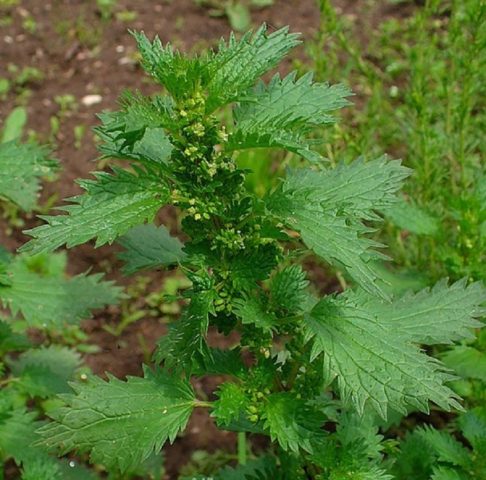
The procurement of raw materials should be dealt with during the flowering culture
Application of stinging nettles
Culture has long been used in various fields. In addition to medicinal compounds, it is widely used in cooking, cosmetology, agriculture, and light industry. To increase milk yield, the shoots need to be steamed and added to the feed for the cows. Chopped greens in the diet of chickens raises their egg production. For rabbits, piglets and calves, this is an excellent vitamin supplement.
The plant is also used in the production of environmentally friendly fabrics. They are light and strong. Nettles are used to make ropes and cords.
The main component that is required in the food, pharmaceutical and perfume industries is chlorophyll. It is made from stinging nettle.

Nettle greens are useful not only for people, but also for pets
In folk medicine
Nettle received the greatest recognition in folk medicine. They use not only the leaves of the plant, but also the rhizomes. Decoctions and infusions are used as antiseptic, diuretic, hemostatic agents. To stimulate lactation, in the treatment of skin diseases (lichen, acne, furunculosis). In addition to the usual drugs, traditional medicine also advises extraordinary methods of treatment. For example, nettle brooms for a bath with radiculitis or muscle pain.
The roots are helpful in healing as an astringent and diuretic. The rhizome should be harvested in early spring and autumn.
The herb works very well in the prevention of vitamin deficiency, hypovitaminosis, atherosclerosis. A decoction of the leaves works well in lowering blood sugar levels. Stinging nettle root is used to treat prostate diseases in men.
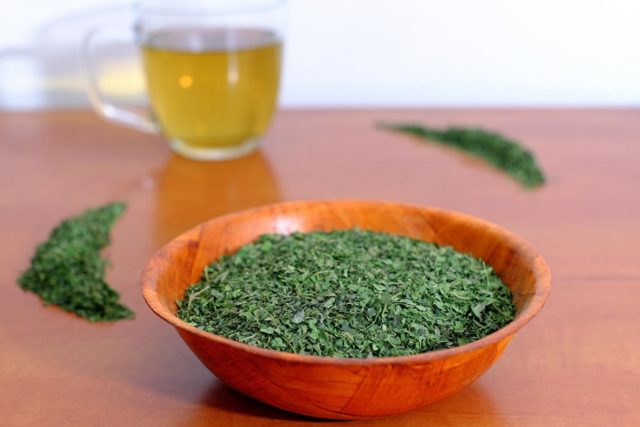
For the preparation of infusions, you can use not only fresh grass, but also dried
In cosmetology
In the beauty industry, hot herb decoction is used to strengthen hair. The drugs are recommended for hair loss or early stages of baldness. After washing, rinse hair in nettle broth, which will give them thickness and shine.
Another way to use is frozen infusion cubes for rubbing your face. This technique tones the skin well, makes it elastic, smoothes wrinkles. It is also recommended to include crushed young growth in cosmetic face masks.
In cooking
It is recommended to eat young shoots of stinging nettles for food. It is suitable for making green cabbage soup, soups, omelets, pies. It is very useful to add nettle leaves to salads, sauces. To enrich the body with vitamins in winter, you should prepare raw materials with the help of:
- Drying... It is best to dry young shoots. Store in fabric bags. You can grind to get a powder and add when cooking.
- Frost... Plastic bags or plastic containers with a lid are suitable for this method. Shredded nettle shoots are frozen.
- Salting... Put the washed raw materials in jars, sprinkling with table salt. For 1 kg of grass you need 50 g of salt. Store only in refrigerator.
Many culinary experts use sprouts to enrich the flavor of meat sauces.
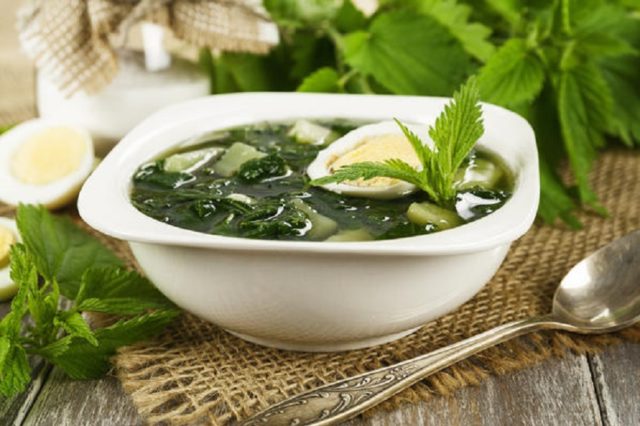
Nettle dishes are not only healthy, but also delicious.
Limitations and contraindications
Like any remedy, stinging nettle has not only medicinal properties, but also contraindications. The plant requires caution in application. This applies to cases of bleeding treatment requiring the intervention of a surgeon. Patients with increased blood clotting, kidney problems should also use the herb with extreme caution. Varicose veins, thrombophlebitis, thrombosis - these diseases can be exacerbated by uncontrolled intake of culture. The use of the plant is contraindicated in pregnant women.
Conclusion
Stinging nettle has many unique properties. Proper use will relieve many diseases, enrich the daily diet with nutrients, and help maintain healthy hair and skin. It is important to study the list of contraindications so as not to cause harm.






